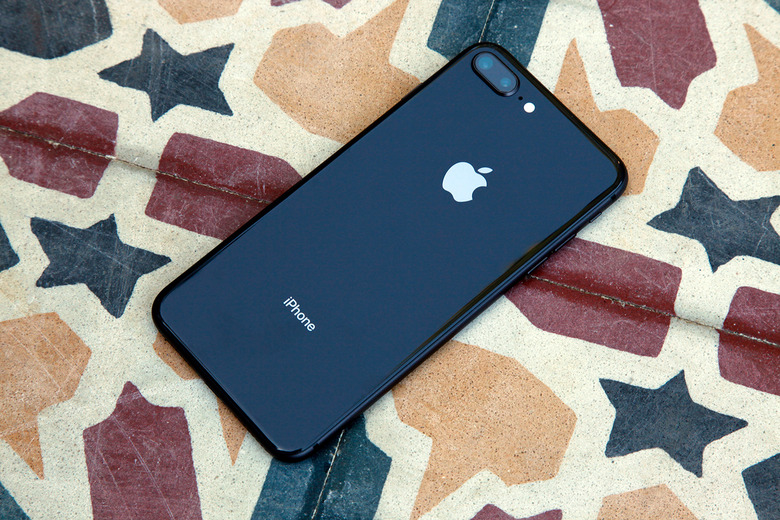I Really Didn't Expect This To Be My Favorite Thing About The iPhone 8 Plus
Apple's iPhone 8 Plus is a boring smartphone. A really, really boring smartphone. It looks just like the iPhone 7 Plus, which looked just like the iPhone 6s Plus, which looked just like the iPhone 6 Plus. Four consecutive years with the same smartphone design is about two years too many. New features have been added along the way, and of course there have been dramatic improvements where speed and performance are concerned. But the iOS user experience hasn't changed much in that span of time, so some people feel almost as though they've been using the same phone for over three years now.
Of course, the iPhone 8 Plus is still the best smartphone in the world right now, and it'll be the phone in my pocket until I get my hands on an iPhone X on November 3rd. If I can get my hands on an iPhone X on November 3rd, that is — reports suggest that there are going to be severe supply shortages following the phone's release.
Now that I've come to terms with how boring the 8 Plus is, I've been able to enjoy the few notable improvements it does bring to the table. The new camera is phenomenal and the speed improvements are appreciated, but there's one thing I've been enjoying most of all and I really didn't expect it.
After using Apple's newest iPad Pro since it was released back in June, there are a few things I've really come to enjoy. The power and speed are impressive, but the new display is just fantastic. Apple's new 120Hz ProMotion screens completely change the feel of iOS for the better. Everything is so much faster and smoother, and the impact can't truly be appreciated until you try it for yourself.
I was really hoping Apple would bring ProMotion to its 2017 iPhone lineup, but alas. Perhaps it will be an addition to next year's "S" update (or whatever Apple ends up calling its iPhones from here on out, since it seems like the company is done with numbers moving forward). Another terrific feature from the iPad Pro's display did make it over to the iPhone 8 and iPhone 8 Plus though, and it might be my favorite thing about the phones.
Apple added a new feature to its 2017 iPhones called "True Tone," which debuted on the company's iPads. The premise is simple enough: the device uses integrated sensors to monitor the color temperature of ambient light, and it adjusts the color temperature of its own displays to match.
Color temperature isn't really something you think about when you're looking at a display. But when you're looking at a display that adjusts its temperature to better suit the surrounding light, the difference is night and day. No pun intended.
Here's a photo from Reddit that shows how dramatic the difference is:
Apple's iPhones have had a feature called "Night Shift" since iOS 10 was introduced last year. This feature automatically reduces the display's blue light each night at a set time or at sundown, and it dramatically reduces eye strain in low light settings. But there's an obvious problem with Night Shift: Just because it's nighttime doesn't mean you're in the dark.
All day and night, we're constantly moving through different lighting. Some rooms have cool, bright LED light bulbs. Others have soft, warm incandescent bulbs. Sometimes it's bright outside. Other times it's cloudy and gray. Night Shift doesn't accommodate any of these lighting changes. But the True Tone display on Apple's iPhone 8 and iPhone 8 Plus does, dynamically changing to suit its surroundings.
It might seem like a minor thing to those who have not yet experienced it, but I can assure you it's not minor at all. This is a feature all smartphone makers are likely to steal in the coming years. Automatic adjustments to color temperature have a big positive impact on the user experience, reducing eye strain in the process. Beyond that, the screen simply looks better when its color temperature matches the surrounding light.
